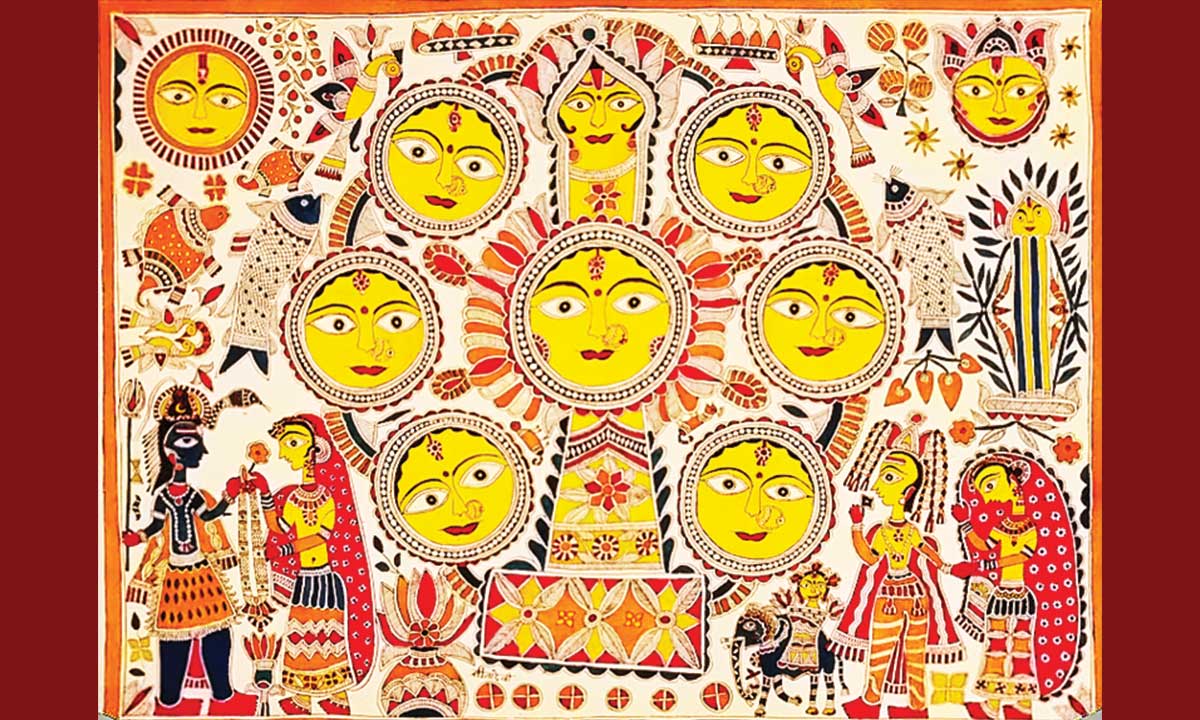What Is Madhubani Art

Madhubani Painting, also known as Mithila painting, is now well known globally. But for over 2500 years, it was a skill that was passed down the generations, mostly by women to women in the Madhubani District of Mithila in Bihar and Nepal
Traditionally there were five distinct styles to the art: Bharni, Kachni, Tantrik, Gonna and Kohbar
There was a caste system even in creating this art where only the 'upper caste' women would work in the Bharni, Kachni and Tantrik Styles depicting Gods and Goddesses. The 'lower caste' women depicted aspects of daily and routine life in their paintings.
These paintings generally depict people and their associations with nature, gods, ancient epics and social events like weddings. No space is left empty. All spaces are filled up with small patterns of flowers, birds, animals and even geometric shapes.
Madhubani paintings have distinct characteristics in the figures drawn. Big Eyes, prominent sharp noses, lots of geometric and floral patterns give it a distinct identity.
Twigs, matchsticks, fibres and even fingers have been traditionally used to make these paintings with natural dyes and inks. Madhubani Paintings are colourful, but they are also sometimes made in single colour outline.
Madhubani art has come a long way from the traditional rural households to grand museums and private collections as art pieces. There is also a huge demand on the house decor front with Madhubani art being recreated on pottery, mugs, dinnerware and more.
Madhubani Art has also received a Geographical Indication (GI) status.
Image: Kohbar by Artist Padma Shri Sita Devi [CC BY-SA 4.0]



Leave a Comment